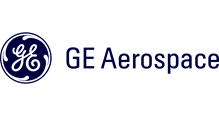
Symposium Supporters
2024 MRS Fall Meeting & Exhibit
QT03.04.05
Using zero-field neutron diffraction on EuRhGe3 single crystals, we aim to uncover its nuclear and magnetic structures. We have found no crystallographic structural changes down to 2 K. An antiferromagnetic transition is observed at TN~11.5 K. The magnetic propagation vector is along the c-axis (0, 0, 0.8), forming a proper screw-type magnetic arrangement that propagates along the c-axis at 2K. The observed magnetic structure differs from other reported Eu-based ternary germanides [3, 4].
1. D. Singh et al., Nat Commun 14, 8050 (2023).
2. A. Maurya et al., JMMM 401, 823 (2016).
3. Fabrèges et al., PRB 93, 214414 (2016).
4. T. Matsumura et al., JPSJ 91, 073703 (2022).
Unraveling Magnetic Structure in Zero Field—Single Crystal Neutron Diffraction Insights into EuRhGe3
When and Where
Dec 3, 2024
9:45am - 10:00am
9:45am - 10:00am
Sheraton, Fifth Floor, The Fens
Presenter(s)
Co-Author(s)
Kamini Gautam1,Yukako Fujishiro1,Oscar Fabelo2,Yoshinori Tokura1,Arima Taka-hisa1
RIKEN1,Institut Laue-Langevin2
Abstract
Kamini Gautam1,Yukako Fujishiro1,Oscar Fabelo2,Yoshinori Tokura1,Arima Taka-hisa1
RIKEN1,Institut Laue-Langevin2
The EuTX3 series, characterized by d-electron transition metals (T) and Si or Ge (X) with the tetragonal non-centrosymmetric BaNiSn3-type crystal structure (space group I4mm), has emerged as a pivotal subject of study for understanding novel topological magnetic phases. Notably, recent neutron diffraction studies on EuNiGe3 have revealed important insights into the hybrid skyrmion phases, marking a significant advancement in the field of topological magnetic states [1]. Expanding on the research in these systems, our study delves into another interesting compound of this family, EuRhGe3. Its magnetic and transport properties reveal a complex magnetic phase diagram [2]. Interestingly, EuRhGe3 shows a significant anomaly in magnetoresistance at the magnetic phase transitions [2].Using zero-field neutron diffraction on EuRhGe3 single crystals, we aim to uncover its nuclear and magnetic structures. We have found no crystallographic structural changes down to 2 K. An antiferromagnetic transition is observed at TN~11.5 K. The magnetic propagation vector is along the c-axis (0, 0, 0.8), forming a proper screw-type magnetic arrangement that propagates along the c-axis at 2K. The observed magnetic structure differs from other reported Eu-based ternary germanides [3, 4].
1. D. Singh et al., Nat Commun 14, 8050 (2023).
2. A. Maurya et al., JMMM 401, 823 (2016).
3. Fabrèges et al., PRB 93, 214414 (2016).
4. T. Matsumura et al., JPSJ 91, 073703 (2022).
Keywords
Symposium Organizers
Paolo Bondavalli, Thales Research and Technology
Nadya Mason, The University of Chicago
Marco Minissale, CNRS
Pierre Seneor, Unité Mixte de Physique & Univ. Paris-Saclay
Session Chairs
Thierry Angot
Paolo Bondavalli




